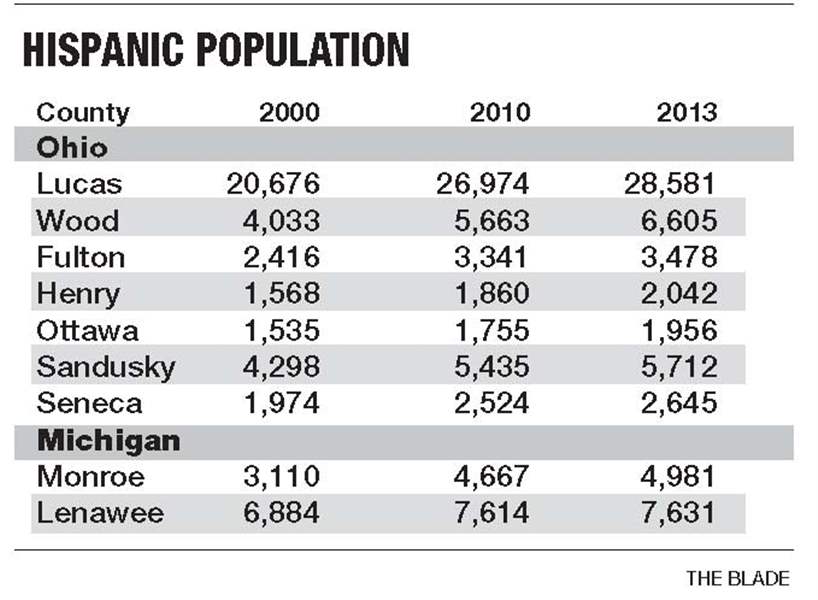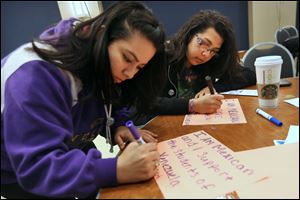
Hispanic population continues to increase in northwest Ohio
Data reflect statewide trends
6/27/2014

University of Toledo students AnaPatricia Marquez, left, Anissa Covarrubias, right, create small posters in support of citizens of Venezuela during a meeting put on by the South American and Hispanic Students Association at UT in April. Both girls are members of the Latino Student Union and had turned out in support of their Venezuelan classmates. "We're family," AnaPatricia said. "When it hits them it hits us." The Blade/Katie Rausch
Data released Thursday by the U.S. Census Bureau show that the Hispanic population of Lucas County has continued to increase, reflecting statewide trends.
The new data, which cover 2013, indicate that the population of Lucas County decreased by 18,700 people since 2000. But while the population dropped from 455,093 to 436,393, the Hispanic population grew from 20,676 to 28,581 residents during that time.
That means Hispanics now constitute 6.5 percent of the county’s total population, up from 4.5 percent in 2000.
The numbers echo similar figures across the region. The Hispanic population of Wood County, for instance, has increased from 4,033 to 6,605 residents. Numbers in Fulton grew from 2,416 to 3,478 people. And in Monroe County, the count rose from 3,110 to 4,981.
Meanwhile, the Hispanic population also has increased statewide. In 2000, 1.9 percent of Ohioans were Hispanic, according to the Census Bureau. In 2013, that number increased to 3.4 percent.

Ohio’s statistics are part of a national trend, said Mark Hugo Lopez, the director of Hispanic research at the Pew Research Center. The Hispanic population is growing in “virtually every corner” of the United States, he said, noting that Hispanics were the fastest-growing demographic group in the country during the 2000s.
But what’s unique about current trends, Mr. Lopez said, is that “births ... matter more for Hispanic population growth than the arrival of new immigrants.”
Hispanics also can belong to any racial group, as the Census Bureau considers “Hispanic” to be an ethnicity rather than a race. White Hispanics, with a total population of 20,359 people, make up the majority of the Lucas County Hispanic community. The remaining 8,222 Hispanic residents come from other demographic groups or are multiracial.
Lucas County also has become more diverse overall, the census data show. African-Americans constituted 16.9 percent of the county population in 2000 and 18.9 percent in 2013. The percentage of Asian-Americans in the county rose from 1.2 to 1.7.
Meanwhile, the county is aging. The percentage of residents older than 65 rose from 13.1 to 14.2, while that of residents younger than 20 dropped from 29.1 to 26 percent.
Contact Marissa Medansky at:
mmedansky@theblade.com
or 419-724-6368.